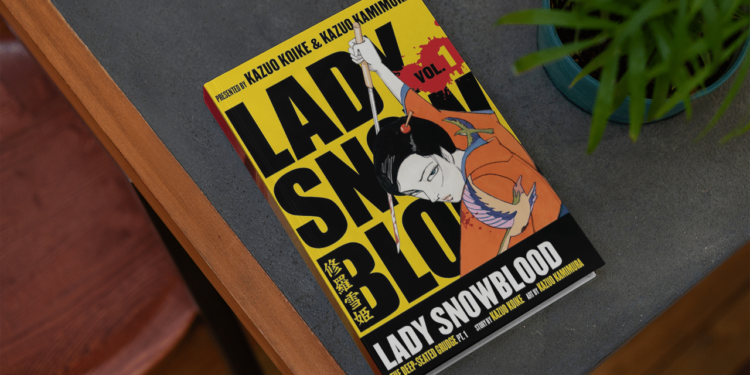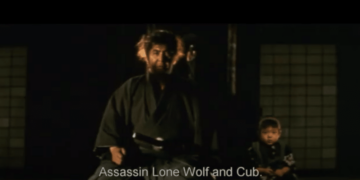Kazuo Koike, a legendary figure in the world of comics, has left an indelible mark on the industry with his captivating storytelling and unique approach to the medium. Born on May 8, 1936, in Akita, Japan, Koike’s early life was marked by hardship and struggle. Despite facing numerous challenges, he persevered and went on to become one of the most influential comic book writers of all time.
Kazuo Koike’s Early Life and Upbringing
Koike’s childhood was far from easy, as he grew up in a war-torn Japan. His family, like many others, faced financial difficulties, and this had a profound impact on young Koike’s outlook on life. However, it was during this time that he found solace in the world of comic books, which provided an escape from the harsh realities of his surroundings.
The Journey of Becoming a Comic Book Writer
Koike’s passion for comics led him to pursue a career in the industry. After completing his education, he began working as an assistant to various manga artists, honing his skills and learning the intricacies of the craft. It was during this period that he developed his own unique style and storytelling techniques, which would later become his trademark.
Kazuo Koike’s Notable Works and Contributions to the Industry
Koike’s body of work is extensive and diverse, encompassing a wide range of genres and themes. However, he is perhaps best known for his masterpiece, “Lone Wolf and Cub,” which tells the story of a wandering samurai and his young son on a quest for revenge. This epic series, which ran from 1970 to 1976, has been hailed as one of the greatest manga of all time and has inspired countless artists and writers.
In addition to “Lone Wolf and Cub,” Koike has also created other notable works such as “Lady Snowblood,” “Crying Freeman,” and “Samurai Executioner.” These comics, characterized by their intricate plotlines, complex characters, and stunning artwork, have solidified Koike’s reputation as a visionary storyteller.
Exploring the Themes and Storytelling Techniques in His Comics
One of the defining features of Koike’s work is his ability to seamlessly blend action, drama, and philosophical themes. His stories often delve into the complexities of human nature, exploring themes of honor, loyalty, and redemption. Moreover, his use of cinematic storytelling techniques, such as dynamic panel layouts and dramatic pacing, further enhances the immersive experience of reading his comics.
Kazuo Koike’s Love Life, Friendships, and Personal Relationships
Beyond his contributions to the world of comics, Kazuo Koike led a fascinating personal life. He was known for his charismatic personality and had a wide circle of friends and acquaintances. His love life was equally intriguing, with multiple marriages and relationships. These personal experiences undoubtedly influenced his work, adding depth and authenticity to his characters and stories.
Unraveling the Enigmatic Personality of Kazuo Koike
Koike’s enigmatic personality has fascinated fans and critics alike. He was known for his introspective nature and often kept a low profile, preferring to let his work speak for itself. Despite his success and acclaim, Koike remained humble and grounded, never losing sight of his passion for storytelling and his dedication to his craft.
Notable Quotes That Reflect Kazuo Koike’s Philosophy
Koike’s work is not only renowned for its captivating narratives but also for the profound wisdom it imparts. His comics are filled with thought-provoking quotes that resonate with readers on a deeper level. One such quote is, “A man’s soul is measured by his actions, not his possessions.” This encapsulates Koike’s philosophy of valuing integrity and character over material wealth.
Setting the Stage: Main Places Where Kazuo Koike’s Comics Take Place
Koike’s comics are often set in historically rich and vividly depicted locations. From the feudal landscapes of ancient Japan to the bustling streets of Edo period Tokyo, each setting serves as a backdrop for the unfolding stories. Some of the main places where Koike’s comics take place include the rugged wilderness of Hokkaido, the seedy underbelly of Shinjuku, and the desolate landscapes of feudal Japan.
The First and Last Comic by Kazuo Koike
Koike’s first foray into the world of comics was with his debut work, “Nishijin Pachinko Monogatari,” which explored the world of pachinko parlors and the lives of those who frequented them. This early work showcased Koike’s talent for creating compelling characters and intricate narratives.
As for his last comic, Koike continued to create until his passing. Despite his advanced age, he remained dedicated to his craft and continued to inspire generations of comic book enthusiasts. The impact of his final work, “Shinsetsu Samurai Executioner,” was felt throughout the industry, leaving a lasting legacy.
The Screen Adaptation of Lone Wolf and Cub: Baby Cart at the River Styx
One of the most notable adaptations of Koike’s work is the film “Lone Wolf and Cub: Baby Cart at the River Styx.” Directed by Kenji Misumi, the movie masterfully brought the epic saga to life on the big screen. It captured the essence of Koike’s storytelling, delivering a visually stunning and emotionally gripping experience for audiences worldwide.
Other Artists Who Inspired Kazuo Koike’s Work
Koike’s work was not only influenced by his own experiences and observations but also by the works of other artists. He drew inspiration from the likes of Osamu Tezuka, the father of manga, and Akira Kurosawa, the renowned film director. Their innovative storytelling techniques and profound narratives shaped Koike’s approach to creating comics.
Must-Read Comics and Writers for Fans of Kazuo Koike
For fans who have been captivated by Koike’s works, there are several other comics and writers that deserve attention. In the realm of Japanese manga, the works of Osamu Tezuka and Shotaro Ishinomori are highly recommended. Their contributions to the medium have paved the way for artists like Koike.
Furthermore, for fans who enjoy the gritty and dark storytelling that Koike is known for, Frank Miller’s “Sin City” and Alan Moore’s “Watchmen” are must-reads. These comics push the boundaries of the medium and share thematic similarities with Koike’s work.
Where to Buy Kazuo Koike’s Comics
Kazuo Koike’s comics are widely available at various online and offline retailers. Websites such as Amazon and Comixology offer a wide selection of his works in both physical and digital formats. Additionally, local comic book stores often carry a range of Koike’s titles, allowing fans to support their local communities and immerse themselves in his captivating stories.
Conclusion: The Enduring Legacy of Kazuo Koike in the World of Comics
Kazuo Koike’s contributions to the world of comics are immeasurable. Through his captivating storytelling, complex characters, and thought-provoking themes, he has left an indelible mark on the industry. His enduring legacy continues to inspire and influence artists and writers around the globe. As we delve into the enigmatic world of Koike, we are reminded of the power of storytelling and its ability to transcend boundaries and captivate audiences for generations to come.









